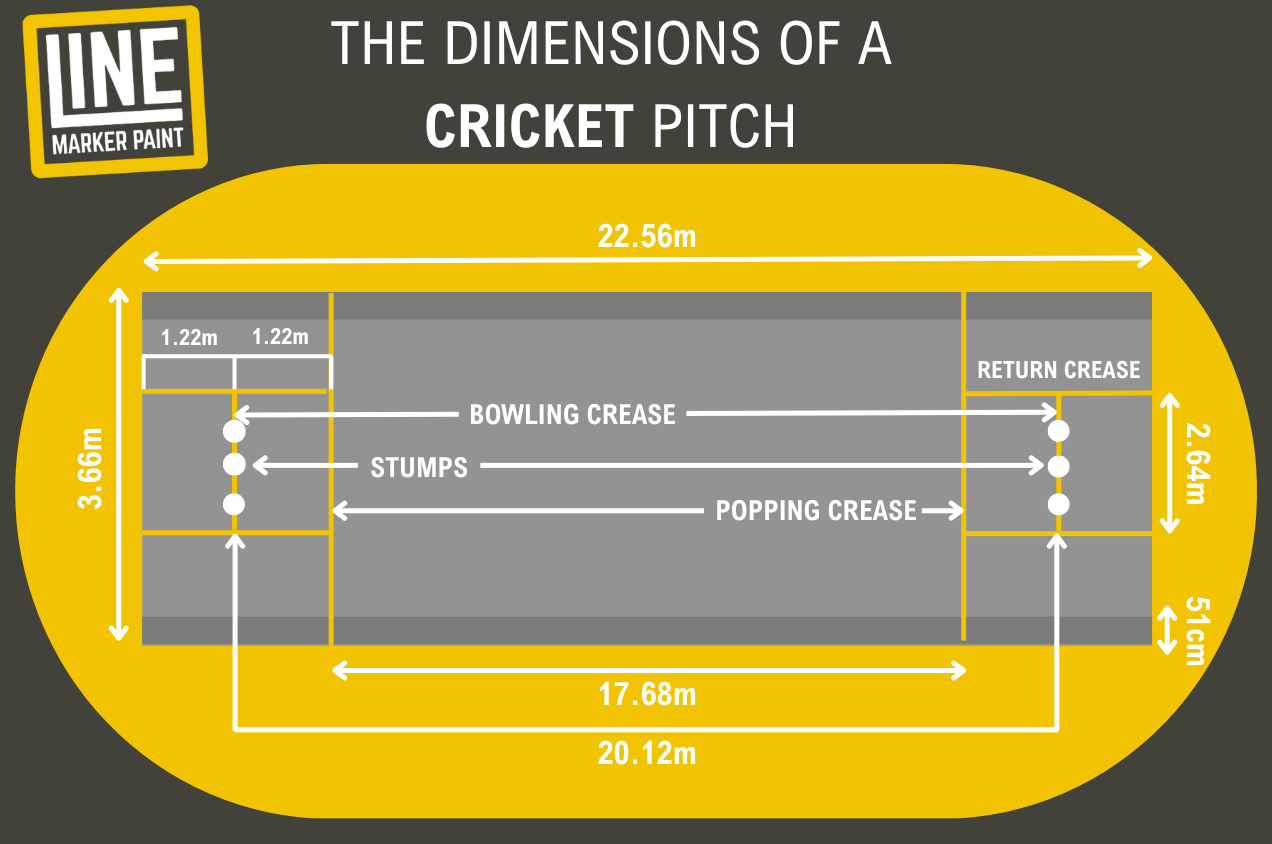The Dimensions Of A Cricket Pitch
Cricket is a game of distances. From the player's positioning to the behaviour of the ball, precision is paramount. It is crucial that each crease is clean, visible and accurately marked.

INTRODUCTION:
Cricket is a game of distances. From the length of the pitch, the gap between the creases and the player's positioning, to the behaviour of the ball, precision is paramount. Clean, visible and accurate line markings create an essential foundation for an authentic cricket match.
The distance between each crease serves as an indicator for the correct position for batsmen and bowlers, while allowing umpires to make crucial decisions such as if bowlers are delivering legal blows and determining if the batsmen are within their crease. It also ensures the rules and regulations as set by the MCC (Marylebone Cricket Club).
OVERALL DIMENSIONS:
Though there are variables in every cricket pitch from ground to ground, the pitch is always rectangular in shape with the same line markings to indicate different features of the pitch and to direct players on where to stand. The pitch is situated in the middle of the cricket ground, consisting of the batsmen and bowler. All other players are positioned on the surrounding cricket field. There are multiple creases in cricket: a bowling crease, popping crease and two return creases at either end of the pitch. The creases indicate where the batsmen and bowlers may position themselves, ensuring safety and a fair game.

PITCH LENGTH:
A cricket pitch measures 22 yards (20.1m) in length, spanning from stump to stump. The entirety of the pitch is 24.6 yards (22.6m). The precision of the pitch length is essential, as the pace and bounce of the ball is directly influenced by distance, while both bowlers and batsmen meticulously use all 22 yards to successfully strategize.
PITCH WIDTH:
A cricket pitch is 4 yards (3.66m) wide in total, with a width of 3.3 yards (3m) used during the game. This provides sufficient space for batsmen to adjust their stance and footwork to effectively execute shots with confidence.
BOWLING CREASES:
The bowling crease runs across the pitch measuring 2.64m in length. This line is particularly important as it marks the end of the pitch on both sides – It also serves as a starting point for bowlers during run-ups.
POPPING CREASES:
Also known as the 'batting creases', the popping crease is a horizontal line running across the cricket pitch at each end, located 1.22m in front and parallel to the bowling crease. This line is significant as it provides a guide for batsmen in terms of their positioning to avoid the risk of being stumped or run out.
RETURN CREASES:
The return creases are positioned vertically on either side of the popping crease, forming right angles to the popping crease. The line measures 1.32m in length and should be marked a minimum of 2.44m behind the popping crease on both ends of the pitch. The return crease serves as a guideline for the bowler's positioning and foot placement during delivery.
MARKING THE LINES:
As previously mentioned, cricket is a game of precision. To achieve the level of perfection necessary whilst line marking the pitches, we recommend using a Zebra Grass Line Marking Machine for the best results for a pitch with neatly cropped natural grass. For artificial pitches, we supply a selection of 3G Pitch Line Marking machines that offer optimal solution for creating the cleanest creases. Our range of paints and accessories are trusted to create sharp, vibrant and long-lasting lines.
In total, using our new Line Marking Paint Calculator, we have estimated that 0.10 litres of paint is required to demarcate a complete cricket pitch. For any other queries or if you seek professional assistance in line marking, our team of experts is available to provide guidance and ensure precise application for the perfect pitch. We are happy to help over the phone or via Live Chat.























